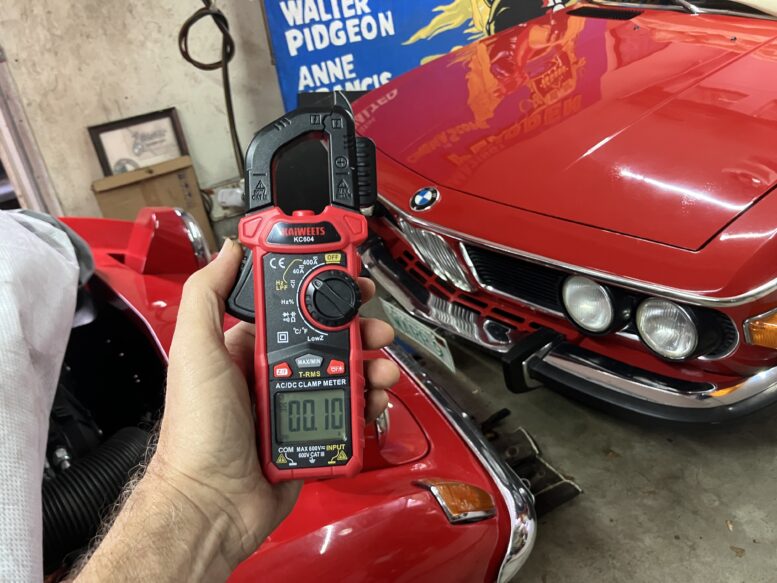Last month, I wrote about installing electric air conditioning (a/c driven by an electric compressor) in my 1969 Lotus Elan +2. As part of that, I needed to take some careful measurements of the current drawn by the compressor, the evaporator assembly, and the condenser fans. I own three old Fluke multimeters, and all of them have a maximum of 10 amps they can handle on a direct all-current-in-the-circuit-flows-through-it amperage measurement. Those that have an internal fuse will blow the fuse; those that don’t will blow the meter (ask me how I know). My suspicion was that the evaporator probably sipped between under 5 and 10 amps, the condenser fans between 10 and 20, and the compressor was a hog at the trough with a quoted range of 40 to 80 depending on whether it was spiking at startup or in a steady-state mode. But in order to verify, I needed another tool.
I’d long been interested in buying a so-called “clamp meter,” which is an ammeter that has pincers like a mutant praying mantis that you use to clip around a wire. It infers the amount of amperage by measuring the magnetic field created by the flowing current. The huge advantage is that you don’t need to disconnect wires and connect the meter in series with the circuit as you do with a multimeter. You leave the circuit as-is and simply press a button to spread the clamp opening and put the wire through it.
I’d looked at these years ago when I was having a problem with a parasitic drain on the Z3 that would kill the battery if the car sat unused for more than a few days. The scuttlebutt on clamp meters was that the inexpensive ones aren’t accurate enough to get a valid measurement for low currents down into the tens of milliamps where parasitic drains can lurk; for that you need to spend real money. So I put the whole thing down and kicked the can down the road with the Z3’s parasitic drain by simply installing a battery cut-off switch and disconnecting the battery whenever the car sat for more than one night. It’s still installed on the car.
But on the Lotus, I didn’t care about milliamps. If a clamp meter was accurate to within a few amps, that was fine. So I looked on Amazon, found that the $19 clamp meters measured AC current but not DC, and to get one with DC current measurement capability, you needed to kick Jeff Bezos another ten bucks. I clicked and bought this one.
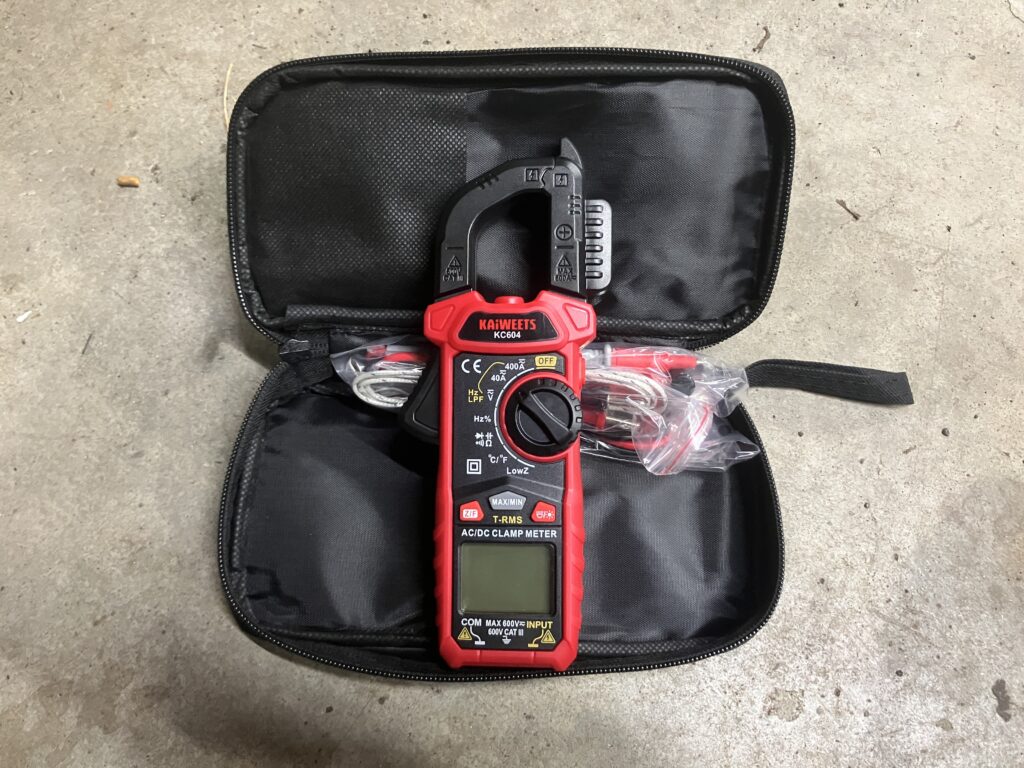
My $30 clamp meter.
It works perfectly. I found that my evaporator draws about 6 amps, the two Spal condenser fans pull about 14 amps, and the electric compressor, despite my being told that it could spike over 80 amps at startup, never rose over 40 amps. So the total draw of the a/c system is about 80 amps. That’s what I needed to know.
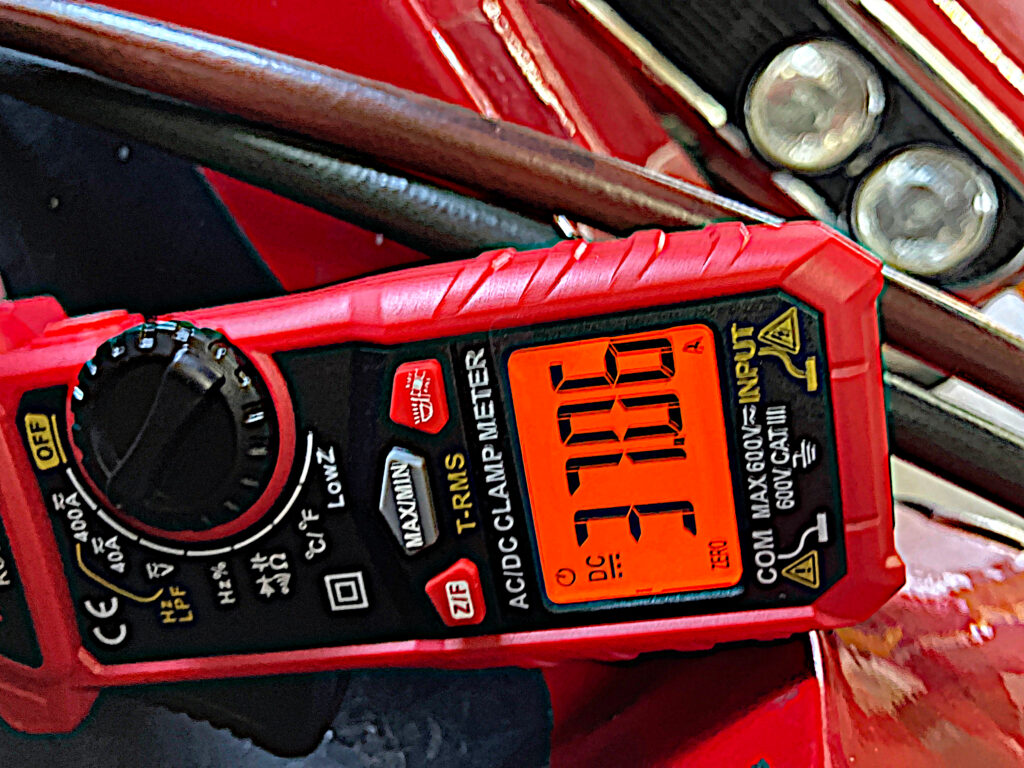
This was the measurement I needed. Sorry for the jittery camera. It’s reading 37 amps.
It worked so well that I became curious how well it would work on a parasitic drain measurement. I clamped it around the Z3’s negative battery terminal, flipped the disconnect switch to the on position, and waited for it to stabilize. It settled down at about half an amp.
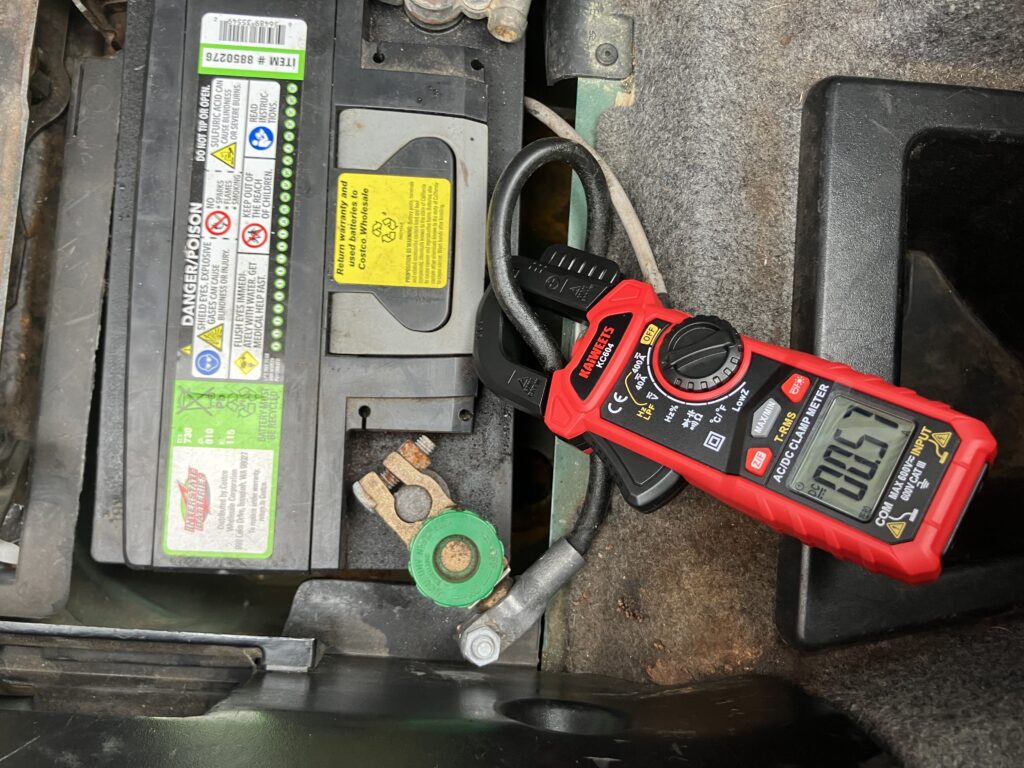
This was promising.
Then I used a conventional multimeter. I first tried all three of the Flukes, and laughed when none of them worked in amperage mode because I’d forgotten that I’d fried one of them and blown the 10amp fuse in the other two and had never bothered to replace it. I pulled the brand-x multimeter out of the tool kit I keep in the Lotus (if you don’t take a multimeter in a car with a Lucas electrical system, you must pray to a god I don’t). I did the measurement several times. It settled down to a very repeatable 220 milliamps.
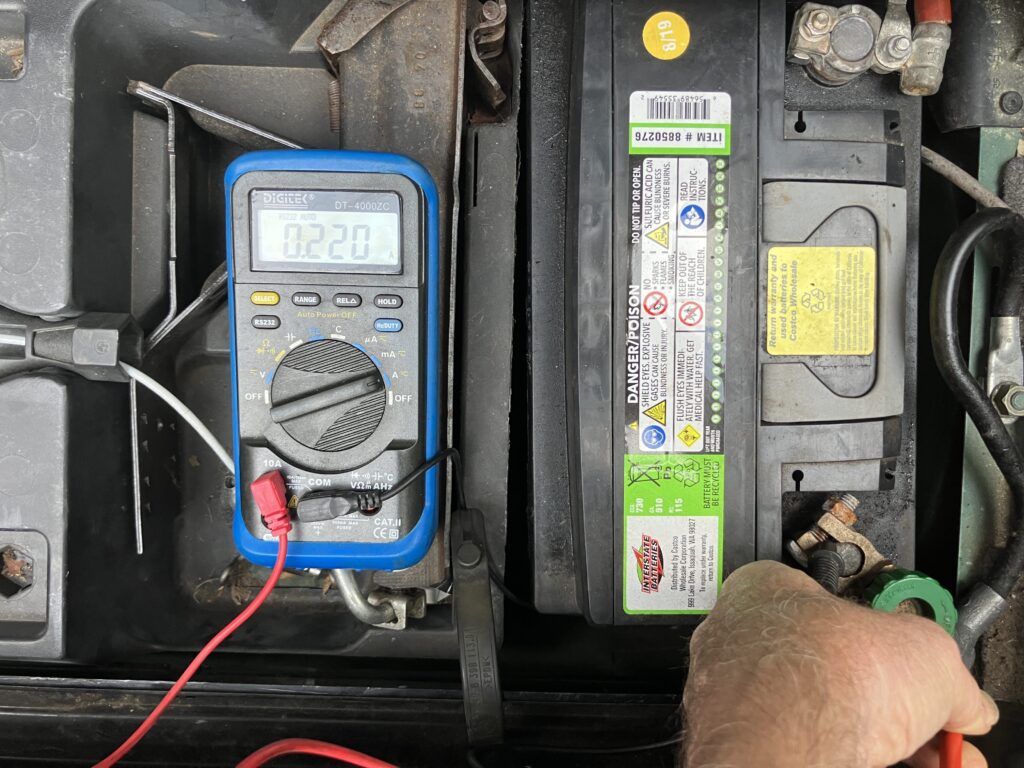
Old school is good school.
I went back to the clamp meter, and found that the parasitic drain reading changed by hundreds of milliamps (tenths of amps) depending on where the wire was located within the clamp loop.
So, a big yes to the clamp meter for beefy current measurements. It’s fast and convenient. I don’t know how I’ve survived this long without owning one. But it’s not accurate enough if you’re trying to characterize and diagnose a parasitic drain in the tens of millivolts. At least this one isn’t.
Still, who doesn’t love having a new tool?
—Rob Siegel
____________________________________
Rob’s latest book, The Best of The Hack Mechanic, is available here on Amazon, as are his seven other books, including Just Needs a Recharge: The Hack Mechanic Guide to Vintage Air Conditioning. Signed copies can be ordered directly from Rob here.

